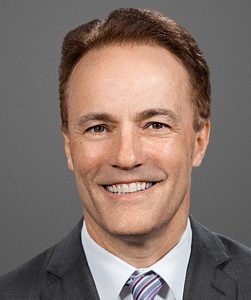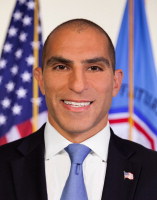
Since the financial crisis of 2008, the number of Futures Commission Merchants (FCM) has decreased significantly, and the Commodities Futures Trading Commission has taken notice.
“The statistics paint a very concerning picture. For futures, the number of FCMs has declined from 100 CFTC-registered entities in 2002 to 54 as of August 2018, with the top five and ten FCMs holding 54% and 73% of total client margin, respectively. For swaps, the client clearing landscape is concentrated further to less than 20 FCMs. Only 17 FCMs are holding client margin for swaps clearing with the top five and ten FCMs holding 77% and 98%, respectively. Further, the Consultation Report prepared by the Financial Stability Board’s Derivatives Assessment Team (DAT) on incentives to centrally clear OTC derivatives appears to be consistent with these findings.” Said CFTC Commissioner Rostin Behnan, in a speech in Chicago.
Behnan made the speech at the Federal Reserve Bank of Chicago’s 5th Annual CCP Conference.
The speech was made on Tuesday, October 16, 2018, and entitled “A Decade After the Financial Crisis: Remaining Challenges and New Approaches for the Next Ten Years and Beyond.”
An FCM “plays an essential role in enabling customers to participate in the futures markets. An FCM is an individual or organization involved in the solicitation or acceptance of buy or sell orders for futures or options on futures in exchange for payment of money (commission) or other assets from customers. An FCM also has the responsibility of collecting margin from customers.” The website Investopedia stated.
Walt Lukken is the Chief Executive Officer of the Futures Industry Association and he was the most recent guest on the podcast of Andrew Busch, where he made a similar point about the reduction of FCM’s.
“We’ve seen a shrinkage in the clearing member community that serves as the foundation for the clearing system. Before we had over 77 today we’re at 54.” Lukken said when he appeared with Busch on Busch’s podcast on Friday, October 11, 2018.
Busch is CFTC’s Chief of Market Intelligence.
This was not the first time Lukken had spoken about clearing shrinkage; he made the same point in a speech in March 2018.
On March 13, 2018, Lukken spoke at the 43rd Annual International Futures Conference where he said, “First, the number of FCMs is shrinking due to the amount of resources needed to be a clearing member. How does this affect the concentration of risk and the manner in which customers’ access our markets? Not exactly clear [no pun intended] but concerning.”

In the audience was Busch, who noted it on the podcast.
Indeed, the reduced number of FCM’s was one of three “unintended consequences of solving yesterday’s problems” as Lukken stated.
The other two were less funding of technology and less cross-border trading.
Why Are FCM’s Shrinking?
Both Lukken and Behnan had theories for why FCM’s have shrunk.
“Many large bank-owned FCMs have exited the swaps clearing business citing as one reason the global introduction of the Basel Committee on Bank Supervision’s Basel III leverage ratio and the Supplementary Leverage Ratio (SLR) in the United States. The SLR, a bank-based capital charge designed, in part, to reduce risk posed by on-balance-sheet lending activities, has been applied to centrally cleared derivatives.” Behnan said in his speech.“The adoption of swaps clearing moved segregated client initial margin off the balance sheets of clearing member FCMs and into CCPs. However, the SLR treats customer margin as an on balance sheet asset.
“The global implementation of the central clearing mandate has produced a significant demand for clearing services and a substantial increase in overall clearing volumes in the swaps market, and yet there have been FCM consolidations and market exits, which have resulted in a substantial reduction in clearing capacity. Given that central clearing is a key component of the G-20’s effort to improve derivatives markets, policymakers, both bank and market regulators, must take the necessary steps to ensure that client clearing remains a commercially viable business. However, according to the DAT Consultation Report, 89% of client clearing service providers surveyed said that the leverage ratio, in particular, was negatively impacting their ability to provide client clearing services.”
“The shrinkage of FCM’s has been a pretty public problem that we’ve tried to highlight at FIA,” Lukken said on Busch’s podcast. “One of the issues have been that we are becoming a more automated, standardized business. So, there are some structural things beyond regulations. Some of it on the margins are high barriers to entry that are causing from either a regulatory stand point or a capital stand point that are causing shrinking FCM community.”
Of SLR- which Behnan also mentioned- Lukken said, “We’ve been working with the CFTC and prudential regulators on trying to address the leverage ratio, which mis-measures the risk that FCM’s bring to a bank.”
The SLR and FCMs
The supplementary leverage ratio (SLR) is yet another invention in response to the 2008 financial crisis.
The SLR, “is calculated as tier one capital divided by the sum of a bank’s on balance sheet and off balance sheet assets, including derivative exposure,” according to Mariam Rafi, head of OTC Clearing for Americas for Citigroup.
As Behnan noted, “The SLR, a bank-based capital charge designed, in part, to reduce risk posed by on-balance-sheet lending activities, has been applied to centrally cleared derivatives. The adoption of swaps clearing moved segregated client initial margin off the balance sheets of clearing member FCMs and into CCPs. However, the SLR treats customer margin as an on balance sheet asset.”









